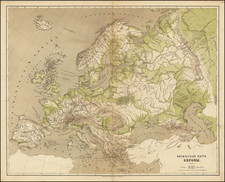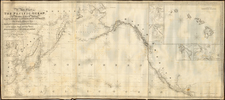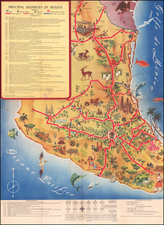The Russian Bear Attacks China
Rare separately published satirical map of Europe, published during the Russo-Japanese War.
The map is a continuation of the tradition of serio-comic style maps, which dates back to the 1870s, reducing European politics to a series of caricatures of the nations of Europe (and occasionally parts of Asia and Africa), highlighting primary antagonist, allies, enemies and neutrals in an array of characters, anthropomorphs and in this case primarily militaristic characters.
The map would seem to be related to Kisaburō Ohara's famous and much more common serio-comic map. However, we cannot determine if this is the case.
Translation
We attempted a translation, which appears below:
Along the shores of the Mediterranean Sea lies the Suez Canal, a pivotal maritime route connecting Europe to the East. It stands as a golden gateway for commerce and navigation.
Ruyudo, known for its political prowess in archery, is referred to as Rusaiju or Rusxi, a vast expanse stretching thousands of miles, its full extent shrouded in the mists of history.
With the passing of time, culinary delights from the region, notably eggplant and canned goods, have emerged. The succulent pork, cherished for its exquisite taste, became a treasured commodity, akin to a nugget of silver.
The bustling activity of the Tokaijin, the people of the Eastern Sea, flourishes in abundance. Their culture, rich and vibrant, is reflected in the lively markets and the completion of the Qing dew, a metaphorical expression of perfection.
In the maritime crossroads of the Strait of Gibraltar, where dew seems to hang in the balance, the region's history resonates with tales of naval exploits and commercial ventures.
Echoes of the past reverberate in Eikiri, a place whose historical significance to Japan is likened to that of a centuries-old kinship with the sovereigns of the Eastern Sea and the Manchu lineage.
In this global tapestry, the British nation stands out, its emblem the lion, symbolizing its aspirations and might.
As time moves forward, the narrative shifts to the modern era. Japan, with its dynastic feuds resolved, sets its gaze toward international engagement. To the west, Russia's urban centers evolve, while Japan's own capital finds a parallel in the economic vigor of the French and Russian metropolises.
In the backdrop of these developments, secret alliances form, and the independence of regions like Chacha emerges, hinting at a complex web of diplomatic relations.
The term "Niqihoyaki" suggests a cultural or culinary aspect yet to be explored, indicating a tradition or practice that enriches the region's heritage.
The Mediterranean coast, ever a witness to the ebb and flow of history, continues to observe the comings and goings of people. Here, the old mingle with the new, and the dreams of the past meet the realities of the present.
Rarity
This is the only example of the map that we can locate. A search for the English-language title in OCLC returns no results.












![ПОЛИТИЧЕСКАЯ КАРТА Азии [Political Map of Asia]](https://storage.googleapis.com/raremaps/img/small/90255.jpg)

![(World War II) [Iwo Jima Aerial Reconnaissance Photograph, March 8, 1945]](https://storage.googleapis.com/raremaps/img/small/83776.jpg)